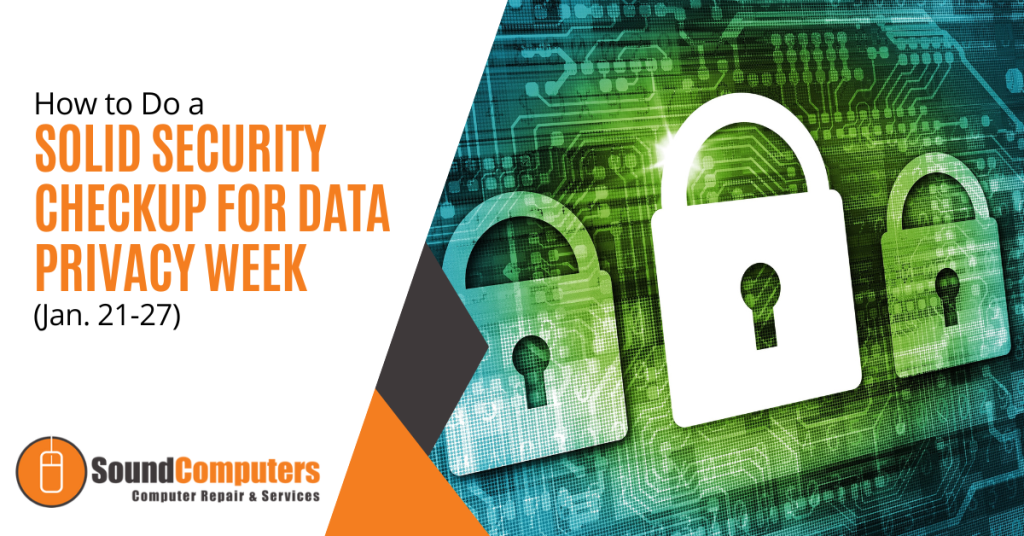
In the realm of our digitally dominated world where personal information has become a valuable currency, Data Privacy Week stands as an annual reminder of the paramount importance of safeguarding such data.
The evolving landscape of cyber threats (ranging from commonplace phishing attacks to sophisticated malware) underscores the need for both individuals and businesses to conduct thorough security checkups. This guide aims to provide a comprehensive roadmap for fortifying your digital defenses during Data Privacy Week and beyond.
Why Data Privacy Matters
The Growing Threat Landscape
In this era, technology has facilitated the exponential growth of data which transformed it into a commodity of immense value. However, this very value has attracted an alarming surge in cyber threats.
These threats encompass a spectrum from the relatively simple but pervasive phishing attacks to the highly sophisticated and targeted forms of malware. To fully grasp the significance of data privacy, it is crucial to understand the gravity and diversity of these threats.
Legal Implications
Beyond the realm of cybersecurity, governments globally are recognizing the imperative need for robust data protection laws. Compliance is no longer a choice. It is a legal requirement.
The consequences of non-compliance are severe and range from substantial financial penalties to irreparable damage to a company’s reputation. Prioritizing data privacy is not just about bolstering security. It is also about adhering to an evolving legal landscape.
Conducting a Comprehensive Security Checkup
Reviewing Passwords and Access Control
When initiating a thorough security checkup, the first critical aspect is reviewing passwords and access control measures. Passwords are the first line of defense and must be fortified. Ensure that they adhere to stringent criteria and incorporate a mix of uppercase and lowercase letters, numbers and special characters. Additionally, the implementation of Multi-Factor Authentication (MFA) wherever feasible adds an extra layer of security and significantly enhances the robustness of access controls.
Updating Software and Systems
A fundamental pillar of any security checkup involves keeping software and operating systems up-to-date. Regular updates often include crucial security patches that serve as a shield against known vulnerabilities.
Equally important is identifying and phasing out any legacy systems that may pose security risks. The elimination of outdated systems ensures a streamlined and secure digital environment.
Data Encryption and Storage Practices
In the realm of data privacy, encryption plays a pivotal role. Implementing encryption protocols safeguards sensitive information during both transmission and storage. This ensures that even if unauthorized access occurs, the data remains unintelligible. Equally important is the secure storage of data which ensures that access is restricted and minimizes the risk of unauthorized breaches.
Employee Training and Awareness
Employees are an integral part of the security ecosystem which necessitates focused attention. Regular training sessions should be conducted to educate employees about the latest security threats and best practices.
Furthermore, simulated phishing exercises serve as an invaluable tool to gauge and enhance employee resilience against phishing attacks. A well-informed and vigilant workforce is a potent defense against potential security breaches.
Auditing and Monitoring
The proactive identification of potential security threats is a crucial component of any robust security strategy. Regular audits of systems, networks and access logs help to uncover and address vulnerabilities. Implementing real-time monitoring solutions provides the ability to detect and respond to security incidents promptly. This not only minimizes the impact of potential breaches but also serves as a deterrent against future threats.
Incident Response Plan
Preparedness is key when it comes to cybersecurity. Developing a comprehensive incident response plan ensures a swift and efficient response in the event of a security breach. Regular drills should be conducted to test the efficiency of the plan and allow for necessary adjustments and improvements. An effective incident response plan serves as a safety net and mitigates the potential damage caused by security incidents.
Third-Party Security Assessment
For organizations engaging with third-party vendors, assessing their security practices is paramount. Ensuring that third-party vendors meet established security standards is essential for safeguarding your organization’s data. Additionally, contractual agreements should include stringent security clauses that establish a framework for adherence to data protection standards.
Embracing a Culture of Privacy
Employee Privacy
Moving beyond technical measures, fostering a culture of privacy within an organization involves considerations for employee privacy. The principle of data minimization should guide data collection practices to ensure that only necessary information is collected and processed. Obtaining clear and informed consent from employees before collecting and processing their personal information is not only ethically sound but also aligns with data protection principles.
Customer Privacy
Extending the commitment to privacy to customers involves transparent communication. Clearly articulating privacy policies and detailing how customer data will be used and protected establishes trust. Implementing opt-in mechanisms for data collection empowers customers and gives them control over their information. This not only complies with ethical standards but also contributes to a positive relationship between the organization and its customers.
The Continuous Journey of Data Privacy
Data privacy is not a one-time event but a continuous commitment. Regularly revisiting and reassessing security measures is essential to staying ahead of emerging threats. Fostering a culture of privacy within an organization is an ongoing effort that requires commitment and vigilance. By doing so, organizations contribute to a safer digital environment for both their teams and customers.
As we collectively celebrate Data Privacy Week, let us remember that safeguarding our digital lives is a shared responsibility. By adhering to the principles outlined in this guide, we contribute to a more secure and privacy-centric digital landscape. As you embark on your journey to fortify your digital defenses, keep in mind that Data Privacy Week is not just a week. It is a mindset and a commitment to protect what matters most – your data.
Contact us at Sound Computers to learn more about how we can help you in your journey toward a more secure digital future.
